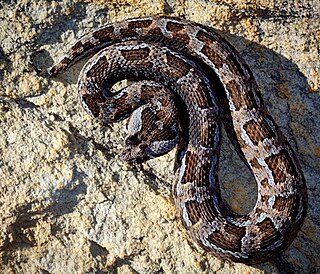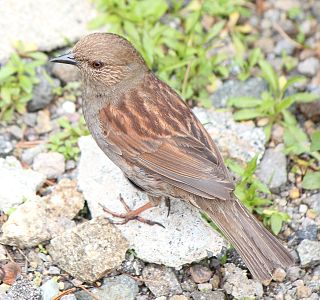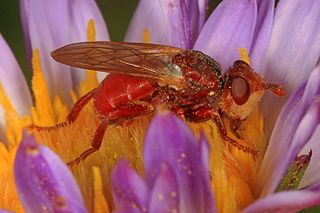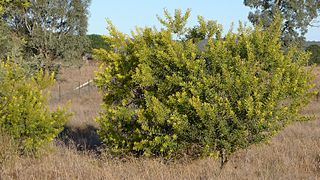
The red adder is a viper species found only in Western Cape Province, South Africa. No subspecies are currently recognised. Like all other vipers, it is venomous.

Eucalyptus rubida, commonly known as candlebark, ribbon gum or white gum, is a species of small to medium-sized tree that is endemic to south-eastern Australia. It has smooth bark, sometimes with rough bark at the base, lance-shaped or curved adult leaves, flower buds in groups of three, white flowers and cup-shaped, hemispherical or bell-shaped fruit.

The Japanese accentor is a species of bird in the family Prunellidae. It is found in Japan and Sakhalin.

The Mexican spotted wood turtle or Mexican spotted terrapin is a species of turtle in the family Geoemydidae.

Chlamys rubida is a species of bivalve mollusc in the family Pectinidae found on the west coast of North America from the Gulf of Alaska to San Diego, California.
Harutaeographa rubida is a moth of the family Noctuidae. It is found in Nepal and northern India (Sikkim).

Phlogochroa rubida is a moth of the family Noctuidae first described by William Jacob Holland in 1920. It is found in the Democratic Republic of the Congo.

Sophronica is a genus of longhorn beetles of the subfamily Lamiinae, containing the following species:
Sophronica rufulescens is a species of beetle in the family Cerambycidae. It was described by Stephan von Breuning in 1940. It feeds on the Monterey pine.
Sophronica grisea is a species of beetle in the family Cerambycidae. It was described by Per Olof Christopher Aurivillius in 1908.

Manica rubida is a species of ant in the subfamily Myrmicinae.
Chariesthes rubida is a species of beetle in the family Cerambycidae. It was described by Chevrolat in 1855, originally under the genus Mesosa. It is known from the Democratic Republic of the Congo, the Central African Republic, Cameroon, Equatorial Guinea, Nigeria, and Gabon. It contains the varietas Chariesthes rubida var. femoralis.
Chlorocypha rubida is a species of jewel damselfly in the family Chlorocyphidae.

Neritilia rubida is a species of submarine cave snail, a marine gastropod mollusc in the family Neritiliidae.
Thaumatomyia rubida is a species of grass fly in the family Chloropidae.
Triatoma rubida is a species of kissing bug in the family Reduviidae. It is found in Central America and North America.

Myopa rubida is a species of thick-headed flies in the family Conopidae.
Metadioctria rubida is a species of robber flies in the family Asilidae.

Acacia rubida, commonly known as red stem wattle, red stemmed wattle or red leaved wattle, is a shrub belonging to the genus Acacia and the subgenus Phyllodineae that is native to parts of eastern Australia.
Castilleja rubida, commonly called the purple alpine paintbrush or Wallowa alpine paintbrush, is a species of Indian paintbrush.









